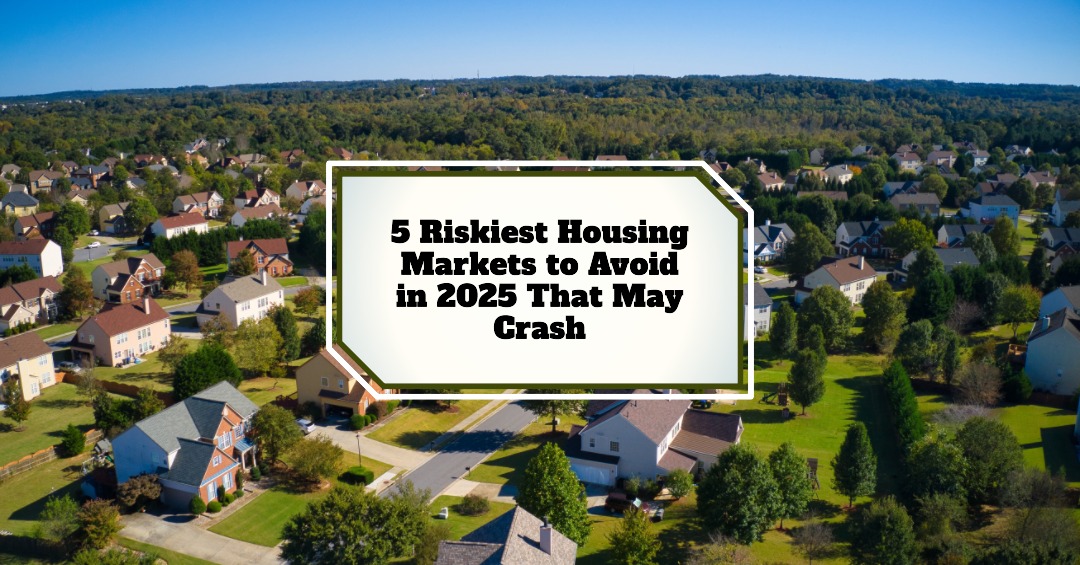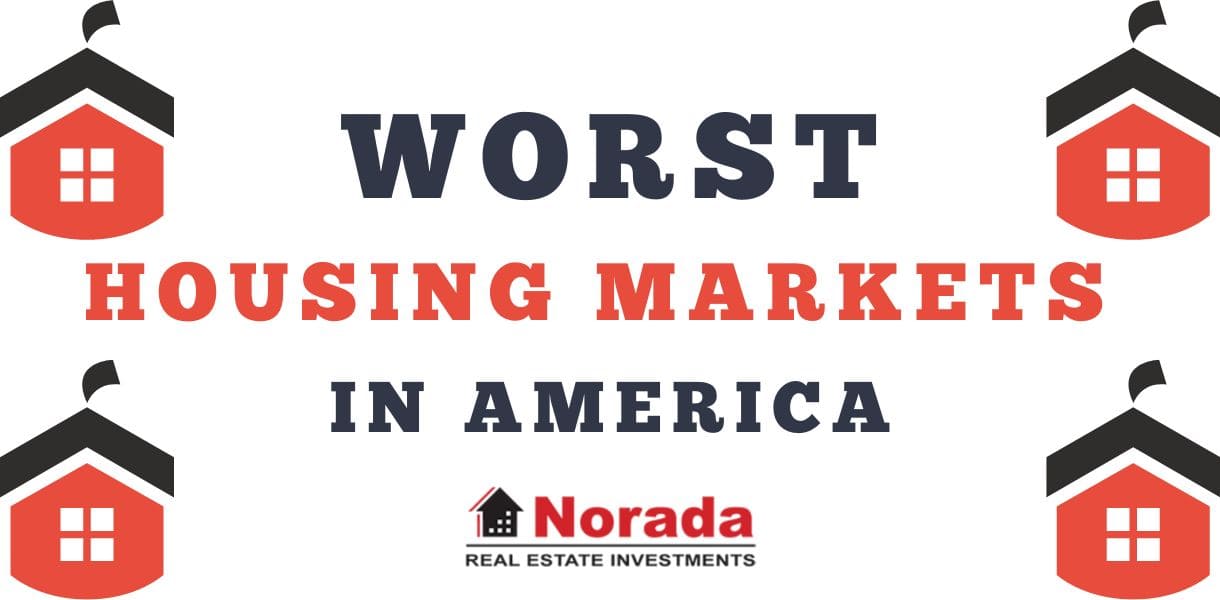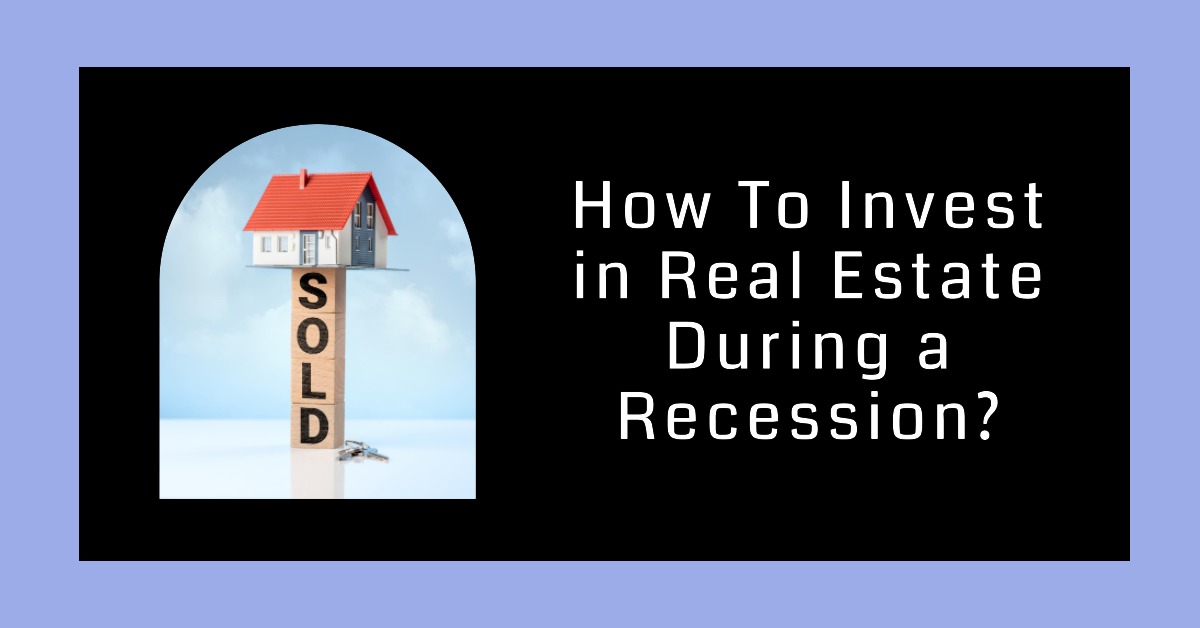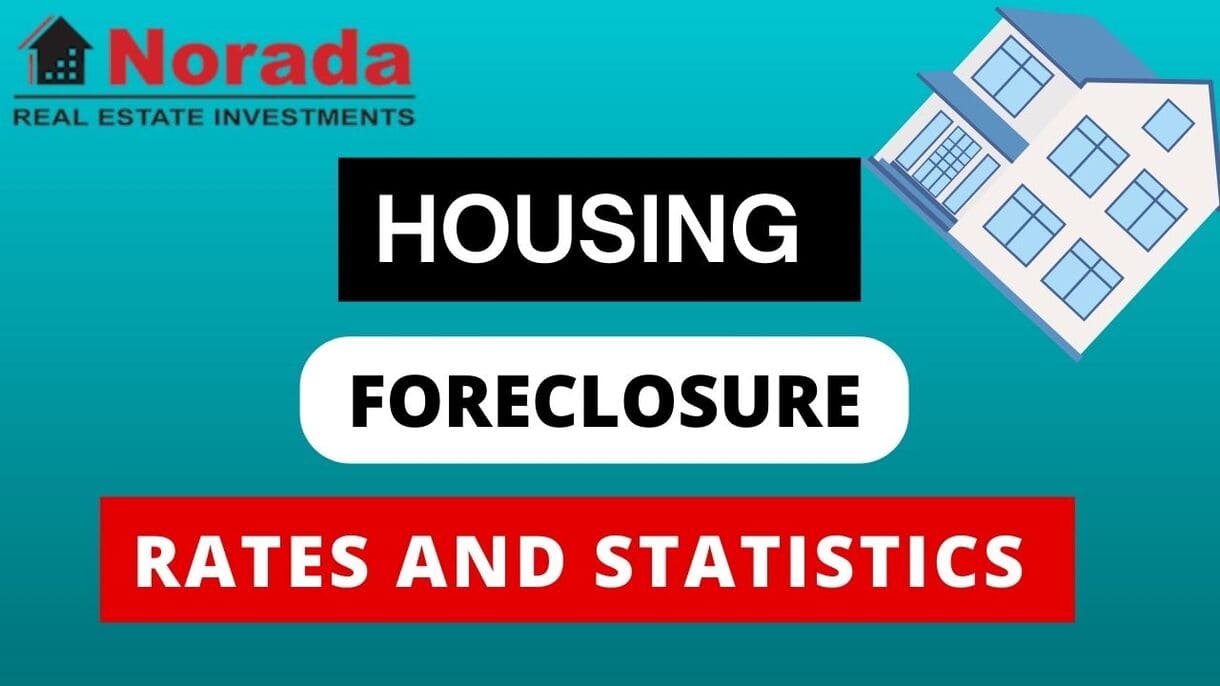Let's talk about the housing market in 2025. It's a topic that gets a lot of people thinking, and maybe a little worried. While national numbers often paint a broad picture, the real story in real estate is always local. Based on recent expert analysis and market data, there are certainly areas showing significant vulnerability. If you're looking to buy or invest, or even sell, understanding where the risks might be highest is crucial. So, let's cut right to it: based on the latest insights, here are the 5 Riskiest Housing Markets to avoid in 2025 that may crash, or at least see significant price declines.
5 Riskiest Housing Markets to Avoid in 2025 That May Crash
Let's be clear from the start: when I say “crash,” I'm talking about the potential for significant price drops, not necessarily a repeat of 2008 across the board. The market dynamics are different now. However, rapid price appreciation combined with shifting economic factors and local inventory changes can create conditions ripe for a sharp correction, which for someone who bought at the peak, feels very much like a crash.
The Shifting Sands of the 2025 Housing Market
Before we dive into the specific risky markets, it's helpful to understand the bigger picture right now. According to the March 2025 data I've been looking at, the housing market's attempt at a spring revival was pretty short-lived.
According to the latest insights by Cotality (Formerly CoreLogic), March saw a bump in pending sales – about 12% higher than the year before – which you might think is a sign of strength. And yes, lower mortgage rates did help nudge some buyers off the fence. But here's the catch: year-over-year price growth actually slowed down, ticking in at 2.5% in March, down slightly from 2.9% in February.
Now, 2.5% growth isn't negative, but it's a far cry from the double-digit gains we saw during the pandemic frenzy. The forecast suggests price growth might speed up a bit by March 2026, perhaps hitting 4.9%, but that's a forecast, and a lot can change.
What I find particularly interesting is how much the market is splitting depending on where you look. You have states like Rhode Island, Connecticut, and New Jersey still seeing strong price growth, upwards of 7% year-over-year. Why? Well, as Chief Economist Selma Hepp points out, a severe lack of homes for sale in these areas, often combined with prices that are still relatively more affordable (median around $230,000 in the Midwest/Northeast mentioned), is propping things up.
On the flip side, states like Utah and Idaho, which saw explosive growth earlier, are now experiencing price drops – 2.1% and 2.2% respectively in March. This tells me that the party of non-stop appreciation is definitely over in some places, especially those that became severely unaffordable after huge run-ups.
And then there's a state like Georgia. The data shows prices hitting new records in parts of the state, maybe because folks are still moving south. But the overall state saw a negative price appreciation of -0.3% in March. This highlights a critical point: you can't just look at state-level data; you must look at specific metro areas.
Why Are Some Markets Looking Shaky?
The data points to a few key culprits making certain markets vulnerable:
- Affordability Has Reached a Breaking Point: Markets like Florida and Texas saw cumulative price increases of 70% to 90% since the pandemic started. Think about that – home prices nearly doubled in just a few years! Meanwhile, incomes haven't kept pace. This creates a massive affordability problem. When homes are simply too expensive for the typical local buyer, demand starts to dry up unless there's constant migration of high-income earners.
- Inventory is Rising, Fast: In many of these areas that boomed, builders ramped up construction, and perhaps homeowners who locked in super-low rates are now being forced to sell or deciding to cash out. The data specifically mentions “rapidly rising inventories” in weakened markets like Florida and Texas. When there are suddenly more homes for sale than buyers willing or able to purchase them, prices have to adjust downwards. It's basic supply and demand.
- Higher Costs Hit Harder in Stretched Markets: Mortgage rates, property taxes, insurance (especially in areas prone to climate risks like Florida) – these non-mortgage costs eat into affordability. In markets where people are already stretched thin because of high prices, these extra costs can be the straw that breaks the camel's back, pushing even more potential buyers out of the market.
- Consumer Jitters: The Chief Economist mentioned consumer concerns about personal finances, job prospects, and wider economic worries. This kind of uncertainty makes people hesitant to make the biggest purchase of their lives, further slowing demand, especially in markets that rely on continued strong buyer confidence.
When you combine sky-high prices built on rapid appreciation, increasing inventory, and buyers pulling back due to costs and uncertainty, you have a recipe for potential price declines. This is precisely what seems to be happening in several areas, particularly in Florida and Texas, which the data highlights as weakened states, now joining places like Hawaii and Washington D.C. in showing negative price changes in March. In fact, eight out of eleven markets measured in Florida saw negative annual changes. That's significant!
The data by Cotality also provides a list of the “Coolest Markets” based on year-over-year price change. Look at some of the places on that list: Fort Myers, FL (-5.3%), Punta Gorda, FL (-4.1%), Sarasota, FL (-3.6%), Victoria, TX (-4.6%), Coeur D'Alene, ID (-3.4%), Pocatello, ID (-3.1%). Many of these saw massive price increases during the pandemic boom and are now correcting. This reinforces the idea that areas with huge, rapid gains are often the most vulnerable when conditions shift.
The Core Concern: The 5 Riskiest Markets
Based on the specific “Markets to watch” identified in the data as having a “very high risk of price decline” among the top 100 metro areas, here are the five markets that appear to be on shaky ground heading into 2025:
- 1. Albuquerque, New Mexico
- 2. Atlanta, Georgia
- 3. Winter Haven, Florida
- 4. Tampa, Florida
- 5. Tucson, Arizona
Let's break down my perspective on why these specific markets are flagged, based on the provided data and charts:
1. Albuquerque, New Mexico
Looking at the high-risk market price trend chart, Albuquerque's line is one of the lower ones, but critically, it shows a noticeable dip recently, especially towards the end of 2024 and into early 2025. While it had a run-up in the post-pandemic boom, it didn't reach the extreme peaks seen in some other cities on this risky list. However, any market that shows a recent downturn after a period of appreciation is concerning.
My take: Albuquerque is a smaller market than places like Atlanta or Tampa. Smaller markets can sometimes be more susceptible to volatility if major employers shrink or leave, or if inventory jumps significantly without enough incoming demand. The recent price dip in the chart suggests supply might be starting to outweigh demand, or buyers are simply saying “no” at current price levels after the earlier growth.
2. Atlanta, Georgia
This one is interesting. The data states that Georgia overall saw negative price appreciation (-0.3%) in March, even though parts of the state hit record prices. Atlanta is the major metro area driving Georgia's housing market narrative. The chart for Atlanta shows a significant peak in mid-2022, followed by a noticeable dip, then a bounce back up in late 2023/early 2024, and now seems to be showing another plateau or slight downturn heading into March 2025.
My take: Atlanta attracted massive numbers of new residents during the pandemic thanks to its relative affordability (compared to coastal cities), job market, and quality of life. However, that popularity drove prices up dramatically. The negative state-level data combined with the volatile price trend line for Atlanta in the chart suggests that affordability is now a major challenge for many potential buyers. Plus, Atlanta is a major metro, which often sees more development and potentially faster inventory increases than smaller towns. This combination of stretched affordability and potential inventory growth puts it at risk.
3. Winter Haven, Florida
Florida markets feature heavily on this risky list, and for good reason, as the data repeatedly points out Florida as a “weakened” state with negative annual changes in many markets. Winter Haven is specifically called out as “one of the top five most at-risk markets in the country.” Looking at its price trend on the chart, Winter Haven saw a huge percentage increase from early 2021 to mid-2022, perhaps one of the most dramatic run-ups on that specific chart. Since its peak, prices have been volatile, showing significant drops followed by partial recoveries, but the trend seems flatter or even slightly down heading into 2025 compared to its peak.
My take: Winter Haven is part of Central Florida, an area that became incredibly popular due to relative affordability compared to South Florida or coastal areas, plus attractions and jobs. But that rapid popularity led to massive price spikes. When prices go up 70-90% in just a few years across the state, markets like Winter Haven, which saw some of the most explosive growth, become extremely vulnerable. They likely reached or exceeded what local incomes can support, and as inventory rises (which the data confirms is happening across Florida), prices have less support.
4. Tampa, Florida
Another Florida market on the list. Like Winter Haven, Tampa saw a very strong price increase from 2021 to 2022 according to the chart, peaking around mid-2022. It then saw a significant correction, a slight rebound, and now the line appears to be trending downwards again towards March 2025. Tampa is a much larger metro area than Winter Haven but faced similar pressures: huge influx of residents, rapid price growth, and now dealing with the state-wide issues of rising inventory and affordability challenges mentioned in the data.
My take: Tampa's economy is more diverse than some smaller Florida towns, but it still experienced an unsustainable surge in home values. It's a classic example of a market where demand outpaced supply dramatically for a time, driving prices sky-high. Now, as supply catches up and affordability bites, the market is struggling to sustain those peak prices. The chart clearly shows volatility and a recent downward trend reinforcing its high-risk status.
5. Tucson, Arizona
Tucson also saw substantial price growth through 2021 and 2022, peaking in early 2023 according to the chart. Since that peak, the trend has been choppy but generally downwards or flat, with a notable dip in late 2024 and early 2025. While the data specifically calls out Utah and Idaho for Western state price drops, Arizona markets like Tucson often follow similar patterns as they attracted remote workers and migrants seeking lower costs than California during the boom.
My take: Similar to other boomtowns, Tucson's rapid appreciation likely pushed it beyond the reach of many local buyers. As the national economy cools and remote work policies potentially shift, the influx of high-earners might slow, while increased inventory (either from new builds or people needing to sell) puts downward pressure on prices. The chart's recent downward movement makes its inclusion on this high-risk list understandable.
My Perspective on These Risks
As someone who watches market trends closely, I believe the key takeaway from this data and this list of risky markets isn't panic, but awareness. These are markets that went through a period of hyper-growth that simply wasn't sustainable relative to underlying economic fundamentals like local wages.
When I look at these five cities, I see common threads: they likely experienced massive price pumps over the last few years, attracting investors and out-of-state buyers, but potentially leaving local residents behind. Now, as interest rates make borrowing more expensive and inflation eats into savings, combined with rising options for buyers (more houses on the market), the scales are tipping.
Think about it: if a home's price doubled, but local salaries didn't, who is left to buy it when investors step back and migration slows? This is where you see prices start to slide. The data confirms this dynamic, particularly highlighting the “cumulative price increases since the pandemic” as a major factor in states like Florida and Texas becoming “weakened.”
This isn't just academic for me; it influences how I'd advise friends or family looking at these specific areas. I'd tell them to do extra homework. Look specifically at inventory trends in that metro area. How long are homes sitting on the market? Are sellers having to cut prices? Are there a lot of new construction developments finishing up? These ground-level details, combined with the high-risk flags from expert analysis, give a much clearer picture than national headlines.
Recommended Read:
Housing Market Predictions 2025 by Dave Ramsey: Will it Crash?
Beyond the Top 5: Warning Signs in Other Areas
While these five markets are flagged as the riskiest among the top 100 metros, the data suggests the vulnerability isn't limited to just them. The list of “coolest markets” provides further clues. Seeing multiple Florida cities on that list reinforces the widespread nature of the price softness in that state. Similarly, markets in states like Texas and Idaho appearing on that list align with the general trends the report identifies in those regions.
It's a reminder that even if a city isn't on the “top 5 riskiest” list, if it experienced a massive pandemic boom and is now seeing inventory rise or sales slow, it could still be facing a significant price correction in 2025.
What Does “Crash” Really Mean Here?
Again, let's manage expectations. A “crash” in this context is likely referring to a significant correction – perhaps 10%, 15%, or even 20%+ declines from the peak values reached during the frenzy. For someone who bought near the top with a small down payment, a 15-20% drop can wipe out their equity, which feels devastating. For investors who bought speculating on continued rapid growth, it can mean losses.
It's less likely (though not impossible in specific micro-markets) to see the kind of nationwide 30-50% drops some experienced in 2008, primarily because lending standards have been much tighter. However, prolonged stagnation or gradual decline can also be painful for sellers and impact the broader economy. The risk highlighted for these five markets is that the price declines could be sharper or more sustained than elsewhere.
Who Should Be Concerned?
- Potential Buyers in These Markets: This data is a giant yellow flag. You have more leverage than sellers might admit. Do your research, don't overpay, and be prepared for the possibility that the home's value might drop after you buy it. That's less concerning if you plan to stay long-term, but critical if you might need to sell in the next 3-5 years.
- Potential Sellers in These Markets: You might need to adjust your expectations significantly. The days of putting a sign in the yard and getting multiple offers over asking price are likely over. You'll need to price competitively based on current conditions, not peak 2022 values.
- Investors in These Markets: If you bought rental properties or flips expecting quick appreciation, the next few years could be challenging. Negative price movement impacts equity and makes flipping harder. Rental markets are also complex and tied to local economies.
Wrapping It Up
The housing market in 2025 is shaping up to be highly localized. While some areas in the Northeast and Midwest are holding steady or even seeing modest growth thanks to limited inventory and relative affordability, markets that saw explosive, potentially unsustainable growth during the pandemic are now facing headwinds.
The data points to Albuquerque, Atlanta, Winter Haven, Tampa, and Tucson as particularly risky, showing trends and underlying factors that increase the likelihood of price declines or significant corrections.
Understanding these risks isn't about predicting the future with 100% certainty, but about making informed decisions. If you're considering a move or investment in one of these areas, proceed with extra caution, do thorough local research, and perhaps consult with a real estate professional who truly understands the current dynamics in that specific metro, not just the national headlines. The goal is to avoid stepping into a market that could see your investment shrink in the near term.
“Turnkey Real Estate Investing With Norada”
As housing market trends evolve, smart investors are positioning themselves now. Norada offers access to prime, ready-to-rent properties that are built for long-term success.
Invest in areas poised for growth and secure your financial future with properties tailored for rental income and appreciation!
HOT NEW LISTINGS JUST ADDED!
Speak with our expert investment counselors today (No Obligation):
(800) 611-3060
Recommended Read:
- Housing Market Predictions for the Next 4 Years: 2025-2029
- Top 22 Housing Markets Where Prices Are Predicted to Rise the Most by 2026
- Housing Market Predictions 2026: Will it Crash or Boom?
- 12 Housing Markets Set for Double-Digit Price Decline by Early 2026
- 4 States Facing the Major Housing Market Crash or Correction
- Housing Prices Are Set to Rise by 4.1% by the End of 2025
- Housing Market Predictions for the Next 4 Years: 2025 to 2029
- Real Estate Forecast: Will Home Prices Bottom Out in 2025?
- Housing Markets With the Biggest Decline in Home Prices Since 2024
- Why Real Estate Can Thrive During Tariffs Led Economic Uncertainty
- 5 Hottest Real Estate Markets for Buyers & Investors in 2025
- Will Real Estate Rebound in 2025: Top Predictions by Experts
- Will the Housing Market Crash Due to Looming Recession in 2025?





